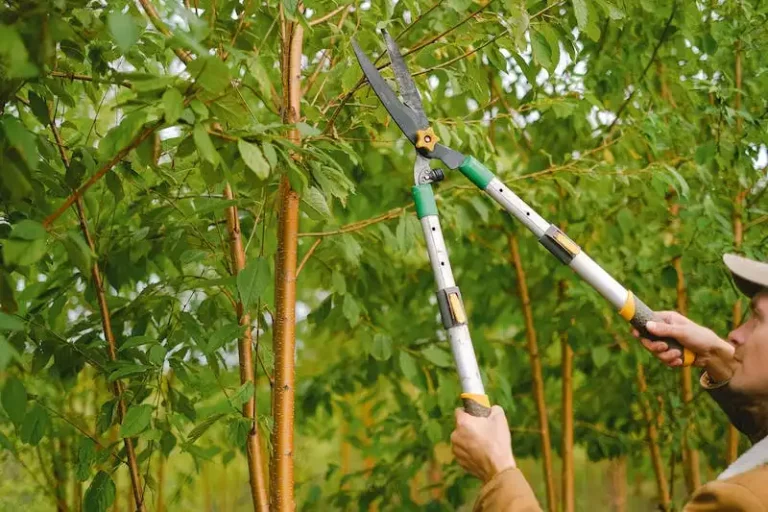Are the leaves of your pothos plant turning yellow? Don’t worry, you’re not alone. Many plant owners experience this issue at some point. Understanding the reasons behind yellowing leaves can help you address the problem and keep your pothos healthy and vibrant.
One of the most common reasons for yellowing leaves is overwatering. Pothos plants don’t like to be constantly wet, so if you’re letting the soil stay too moist and not providing proper drainage, the roots can become waterlogged. This leads to root rot and yellowed leaves. Make sure to let the soil dry out between waterings and ensure the pot has drainage holes to prevent excess water from accumulating.
Another reason for yellowing leaves could be insufficient or too much light. Pothos plants thrive in bright, indirect light, so if you’re keeping them in low-light conditions, the leaves may turn yellow. On the other hand, if your pothos is exposed to too much direct sunlight, the leaves may develop brown spots or look scorched.
Nutrient deficiencies are also a common cause of yellowing leaves in pothos plants. If you’re not providing the right type or amount of fertilizer, the plant may not be getting the necessary nutrients it needs to stay healthy. Regularly feeding your pothos with a balanced fertilizer can help prevent nutrient deficiencies and keep the leaves green and vibrant.
In some cases, yellowing leaves could be a sign of an infestation or disease. Pests like aphids, spider mites, or fungus gnats can stress the plant, leading to yellowed foliage. Fungal infections can also cause yellow or brown spots on the leaves. Regularly inspect your plant for any signs of pests or diseases and take appropriate measures to control them.
One more thing to consider is the natural aging process of the plant. Pothos leaves will naturally turn yellow and eventually fall off as they age. If only the older leaves are turning yellow, while the newer ones remain green, it may be a normal part of the plant’s growth cycle. However, if the entire plant is turning yellow and the leaves are wilting or curling, it may indicate a more serious problem.
In summary, yellowing leaves in pothos plants can be caused by various factors, including overwatering, insufficient or excessive light, nutrient deficiencies, pests, diseases, or natural aging. By understanding the underlying cause and taking corrective action, you can ensure your pothos stays healthy and its leaves stay vibrant.
4 Reasons Why Your Pothos Leaves Are Turning Yellow
If you notice that your pothos leaves are turning yellow, it could be a sign of a problem. Read on to learn about four possible reasons for this change in color and what you can do to care for your pothos plant.
| Reason | Cause | Solution |
|---|---|---|
| 1. Lack of sunlight | Pothos plants prefer bright, indirect sunlight. If they are not getting enough light, their leaves may start to droop and yellow. | Move the plant to a brighter location or closer to a window to provide it with more sunlight. |
| 2. Overwatering | Overwatering is a common cause for yellowing leaves. Pothos plants don’t like to sit in water for extended periods, as this can lead to root rot and other fungal infestations. | Make sure to let the top inch of soil dry out before watering again, and ensure the pot has proper drainage to prevent water accumulation. |
| 3. Lack of nutrients | If your pothos is not getting enough nutrients, the leaves may start to turn yellow and drop. This can be caused by under-fertilizing or using a fertilizer that doesn’t provide the necessary nutrients. | Try fertilizing your pothos plant with a balanced houseplant fertilizer according to the instructions on the packaging. This will provide the necessary nutrients for healthy growth. |
| 4. Pest infestations | Pothos plants are susceptible to pest infestations, such as spider mites or mealybugs. These pests can cause yellowing of the leaves, as well as other deformities. | Inspect your plant regularly for any signs of pests and take appropriate measures to get rid of them. This may include using insecticidal soap or wiping the leaves with a damp cloth. |
By addressing these four possible causes and providing the proper care, you can help your pothos plant regain its healthy green state and prevent further leaf yellowing.
It’s not getting enough light
If you notice that your pothos leaves are turning yellow, one possible reason could be that the plant is not getting enough light. Pothos plants are known for their ability to tolerate low light conditions, but they still need some level of bright, indirect light to thrive.
When a pothos plant doesn’t receive enough light, its leaves can start to droop and turn yellow. The lack of light causes the plant to produce fewer chlorophyll, which is the pigment that gives leaves their green color. Without enough chlorophyll, the leaves may turn pale or yellowish.
To ensure that your pothos is getting enough light, place it in a location where it can receive indirect sunlight for a few hours each day. Avoid placing it near a window with direct sunlight, as this can lead to leaf burn. If your plant is in a room with low light conditions, consider using artificial light sources, such as fluorescent or LED grow lights, to supplement the natural light.
It’s important to note that pothos plants can survive in low light conditions, but they may not grow as fast or produce as many leaves as they would in a well-lit area. If your plant’s leaves have turned yellow due to lack of light, you may also notice that the leaflets have started to curl inward.
In addition to light, other factors that can cause the leaves of a pothos plant to turn yellow include overwatering, temperature extremes, fertilizer issues, or pests. If you’ve ruled out light as the cause of your yellowing leaves, it may be worth investigating these other possible reasons. Remember to consistently check the soil moisture and adjust your watering routine accordingly.
Yellowing leaves can also be a sign of nutrient deficiencies, such as a lack of zinc or fluoride. In this case, it may be helpful to use a balanced fertilizer that includes these nutrients to help your plant regain its healthy green color.
To sum up, a pothos plant with yellow leaves is often a sign that it’s not getting enough light. This lack of light can cause the leaves to turn yellow, droop, or curl inward. Ensure that your plant is placed in a location with adequate light sources, avoid overwatering, and address any nutrient deficiencies that may be causing the yellowing. With the right amount of light and care, your pothos plant should regain its vibrant green color.
What it looks like
When your pothos leaves start turning yellow, it can be a sign that something is not right with your plant. The yellowing of the leaves may appear in a variety of ways, and understanding what it looks like can help you diagnose and address the problem effectively. Here are some common signs you might observe:
|
Moving yellow: If you notice that the yellowing starts at one point on the leaf and gradually spreads across the entire leaf, this could be a sign of a nutrient deficiency or improper watering. |
|
Irregular yellow: When the yellowing appears in random spots across the leaf, it might suggest that your plant has been exposed to direct sunlight for too long or that there are imbalances in the water or nutrient levels in the soil. |
|
Becoming completely yellow: If the whole leaf turns completely yellow, this could be an indication of overwatering or underwatering. The loss of green color in the leaf may also be caused by a lack of light or exposure to extreme temperatures. |
|
Drooping and yellowing: When the leaves start to droop and turn yellow at the same time, it could be a sign that your plant is not receiving enough water or that the roots are suffering from poor drainage. |
|
Yellowing with white spots: If you see yellowed leaves with white spots or patches, it might indicate a fungal infestation. Fungi thrive in moist conditions, so overwatering or high humidity can lead to these symptoms. |
Remember, these are just general indicators, and it’s essential to investigate further to determine the exact cause of the yellowing. Factors such as lighting conditions, watering routine, and even the type of potting mix used can contribute to the appearance of yellow leaves. If you’re unsure about what’s happening with your pothos, it’s always a good idea to seek advice from a plant expert or consult a gardening resource to ensure you’re providing the best care for your houseplants.
The takeaway is that yellowing leaves on your pothos should not be ignored. Taking prompt action to address the issue can help prevent further damage and ensure your plant continues to grow healthy and vibrant.
What to do about it
- If your pothos leaves are turning yellow, it is important to investigate the cause of the yellowing. One common reason for yellowing leaves is overwatering. Make sure you are letting the soil dry out between waterings and that the pot has proper drainage to ensure that excess water can escape.
- Pothos plants prefer bright, indirect light. If your plant is receiving too much direct sunlight, it could lead to pale, yellowed leaves. Try moving your plant to a spot where it receives bright, filtered light to see if this makes a difference.
- Another possible cause of yellowing leaves is fluoride in water. Pothos plants are sensitive to fluoride, and high levels of fluoride can cause the leaves to turn yellow. If you suspect fluoride is the issue, try watering your pothos with distilled or filtered water instead.
- If your pothos leaves are curling, drooping, or turning yellow, it could be a sign of low humidity. Pothos plants prefer high humidity levels, so misting the leaves occasionally can help increase humidity around the plant. However, be careful not to mist the leaves too often, as this can lead to fungal issues.
- Irregular watering can also cause yellowing leaves. Make sure you are watering your pothos consistently, about once a week, and that you are not overwatering or underwatering. The top inch of soil should feel dry to the touch before watering again.
- If none of these reasons seem to be the cause of your pothos leaves turning yellow, it may be worth investigating other factors such as lighting, temperature, or pests like fungus gnats. Pothos plants are generally low-maintenance, but they still have specific needs that should be met to keep them healthy and thriving.
- Overall, it is important to remember that yellowing leaves on a pothos plant do not always mean that the plant is dying. With proper care and attention, you can often revive a yellowing pothos plant and get it back to its healthy green state.




